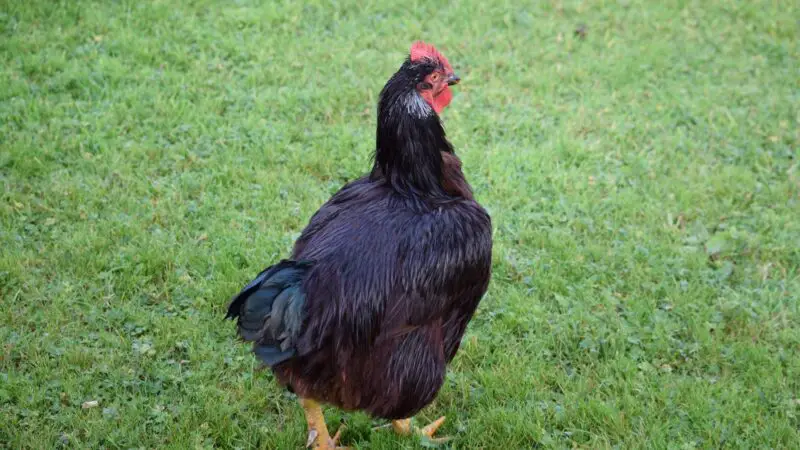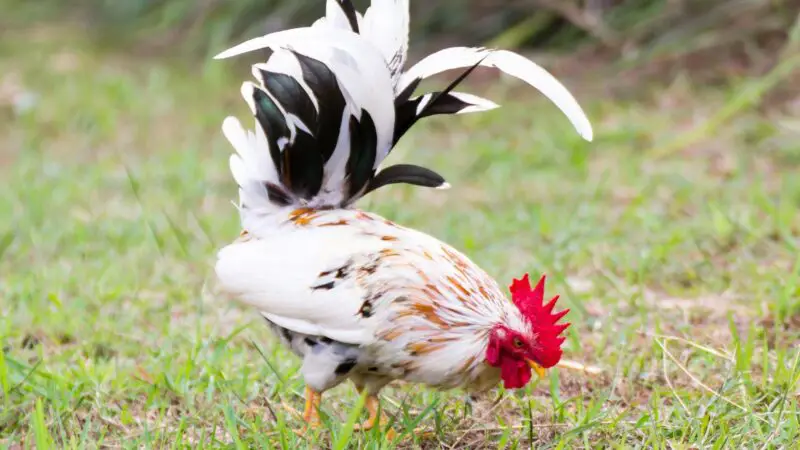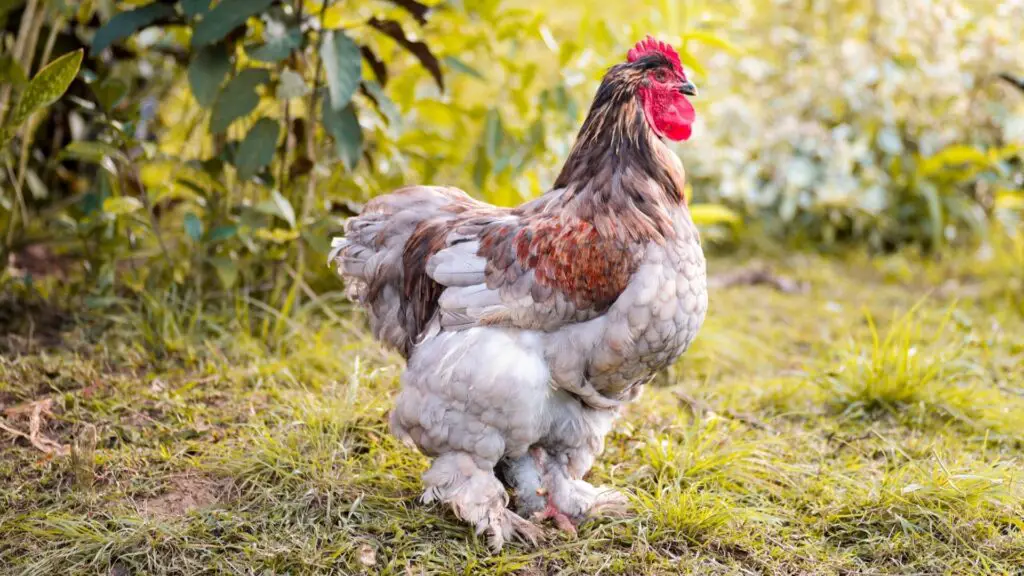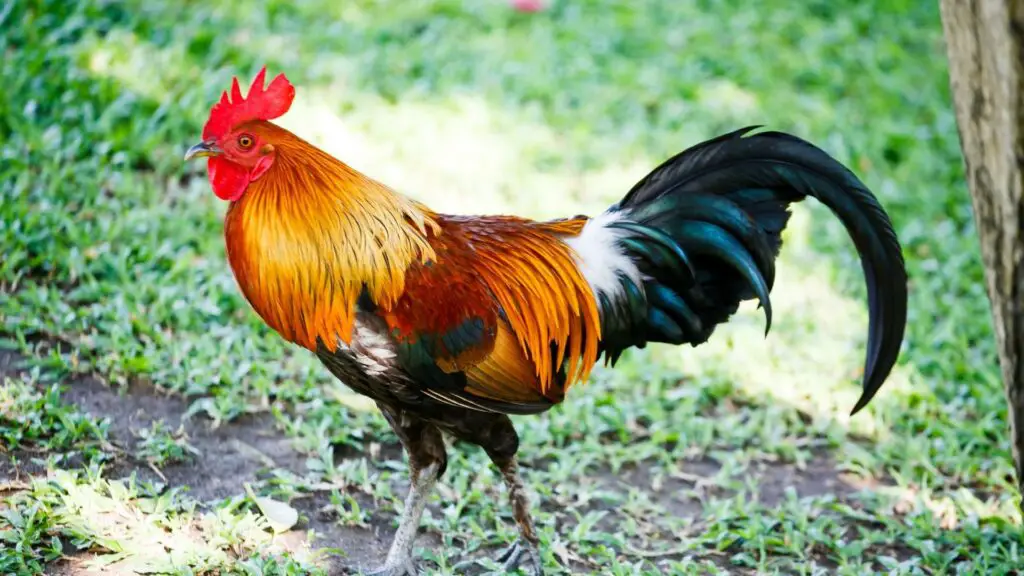Breeders are drawn to Ameraucana chickens because of their blue eggs, which remind you of the Easter egg hunt. They are originally from Chile and brought to the USA.
In 1984, the approval of the American Poultry Association was given to this breed. Who won’t be amazed by the unusual blue egg?
What are those Ameraucana chicken colors? This chicken breed is known as an attractive bird due to its various colors. Ameraucana chickens can be in blue, blue wheaten, black, buff, brown-red, silver, white, and wheaten. The large variety is distinguished as self blue.
If you want to have chickens with colorful plumage, Ameraucana chickens are the best candidates. Before getting them, you must have enough knowledge about these animals. So, spare some time reading the rest of the article.
What are the Ameraucana Chicken Colors?
There are 8 official colors of Ameraucana. They’re described here in their bantam and large fowl versions. Note that both adult bantam and large fowl usually have black beaks, feet, and legs.
Black

Bantam
Black, fluffy feathers are the covering of the chicks that have white wings and necks. An adult female is black all over, and she has black feet. She also has red eyes. Compared to males, females are smaller.
Nevertheless, the appearance of both genders is similar. But the females have striking red pea comb.
Large Fowl
The female large fowl of black Ameraucana also has black feathers with black feet and red eyes. Just like the bantam version, the male is larger than the female.
Though their body and the color of their eyes and feet are the same, the male plumage is more pronounced, and it has a red pea comb that the female doesn’t have. Whether it’s bantam or a large fowl, black Ameraucana chickens have slate black beaks and feet.
White

Bantam
Both male and female adult bantams have white feathers and beaks. Their feet are black slate. The features that set apart males from females are their pea-shaped comb, tail plumage, and muff and beard.
Large Fowl
The white large fowl has white feathers. Its tail, back, and wings are in the same color too. Males and females both have prominent tail feathers, but the former has more plumage. The white beard around the female’s neck is more noticeable. Just like a typical rooster, the male has a red pea-like comb found on his head.
Related: Top 8 White Chicken Breeds | Easy Identification Guide
Silver
Bantam
The chicks of Silver bantam are multicolored, and you can either find them in yellow or white hue. There are black and white stripes that are from their heads up to the tails. Brown coloring can be found on their wings and back. The feet and beak have light colors.
The female silver bantam is also multicolored since it has a brown underside and black tail feathers, wing, and back. Even its head feathers are in black and white. On the other hand, the black body of the male silver bantam is more striking. He has black tail feathers and black and white wings. A white-feathered mantle surrounds his shoulders, and he has a black beard and a muff.
Large Fowl
The female silver large fowl has a gray body and wings. The tail has darker feathers because the ones on its neck are white. Its male counterpart is larger and more dignified as it has black plumage and white-tipped mantel and feathers. While it has a black muff, its comb is red and pea-shaped.
Wheaten
Bantam
The chicks of the wheaten bantam have white bodies and wings. Their head, wings, and back have a splash of pale yellow hue. There’s also a thin, black stripe on their heads and wingtips. They have pale beaks and feet.
The white color is predominant among female wheaten chickens. Orange color spreads on its back, neck, and wingtips. While a white muff surrounds its neck, its tail displays white, black, and orange hues. On the contrary, the male is larger with a black body, wings, and tail. The wingtips of the males have specks of bright orange. Still, his beard and muff are black, but his neck is orange.
Large Fowl
The chick of large fowl is similar to the bantam except for its beak and feet in light and pale yellow color. The female adult has a white body with her wings mottled with orange shade and wingtips in black. The male has gray feathers on its underside and black feathers on its wings and tail.
A bright orange mantle surrounds the black beard and muff of the male. Just like other male chickens, it has a pea-shaped comb.
Blue

Bantam
The blue bantam chicks have dark gray fluffy feathers with a hint of yellow on their wings. They have dark beaks and wings. The female has a smaller frame than the male, but they’re in the same color. Their covering is gray scalloped feathers, but their heads, feet, beaks, and necks are black. You can tell the male apart from a female by its more distinct black feathers. He also has a red pea comb and muff and bears in grey shade.
Large Fowl
The scalloped feathers are prominent among the females. Her feathers are mixed with black and white colors. You’ll see her with dark head feathers too with a muff and beard in dirty white. The male has the same coloring as the female, but it has black plumage on the tail and wing. His muff and beard are gray and black, while his pea-shaped comb is red.
Blue Wheaten
Bantam
The female blue wheaten has white feathers. Her neck, head, and wingtips are rust-colored. Her feathers are embodied in white, blue, and rust colors. Males have grander black feathers. He has a gray beard and muff and red pea comb. Both of them have slate black feet, legs, and beaks.
Large Fowl
The female almost has white feathers all over her body but light brown wings and tail tips. Her head is covered by rusty feathers and her neck is surrounded by a white beard. The male counterpart has scalloped gray feathers on its body and wings, while his tail is black. His neck is covered by orange feathers. Grey and white colors are on his wingtip, beard, and muff.
Buff

Bantam
The male and female bantam buffs look similar. They have rust-colored feathers on their whole body. You’ll find that the tail feathers of the male and female stood up, but the former’s is more pronounced. Also, there’s a display of pea-shaped comb on males’ heads.
Large Fowl
Both genders have rust color on their bodies, tails, and wings with some white splatters. The male’s plumage is much darker than the rest of the feathers. A red pea comb can also be seen on his head.
Brown Red

Bantam
Bantam and large fowl chicks have both gray and black fluffy feathers. They have a distinct light patch on the beak’s top part. The bodies of brown-red adult bantam are black with some orange spots on their collars. But the male’s collar is more prominent.
Large Fowl
The female has a mottled black body along with its tail and wings. The rust color starts from its head until the neck. In the case of its male counterpart, it has an iridescent black body with an orange mantle that runs through his head up to his shoulders.
Frequently Asked Questions
What Color Eggs Do Ameraucana Hens Lay?
As stated by Michigan State University Extension, the egg color is based on the chicken breed. So, Ameraucana hens will always lay blue eggs, while Leghorn hens will always lay white eggs. But all eggs start with white color. The breeds with colored eggs have deposited pigments in them. In the case of Ameraucana hens, they have a pigment called oocyanin to create blue-colored eggs.
How Can You Tell If Ameraucana Chickens Are Male or Female?
The male Ameraucana has a tail, muffs, and beard. These features are referred to as fluffy feathers found on the face and neck. The female Ameraucana doesn’t have a tail but feathers that stick out around its face.
Are Easter Eggers and Ameraucanas the Same?
Easter eggers and ameraucanas are not the same. Easter eggers are referred to by the American Poultry Associations Standard of Perfections as chicken breeds that lay blue eggs. But they don’t meet the standards that recognize Ameraucana chickens.
How Many Eggs Do Ameraucana Chickens Lay a Year?
An Ameraucana hen can lay more than 200 pieces of eggs in a year.
Summary
Ameraucana chickens can decorate your poultry due to their fluffy and colorful feathers. Apart from the eight main varieties, there are more to discover. Hence, you can have a colorful Ameraucana collection.
The most unique attribute of these chickens is their blue egg. Due to the high standards that were set, not all blue eggs are laid by Ameraucana.
